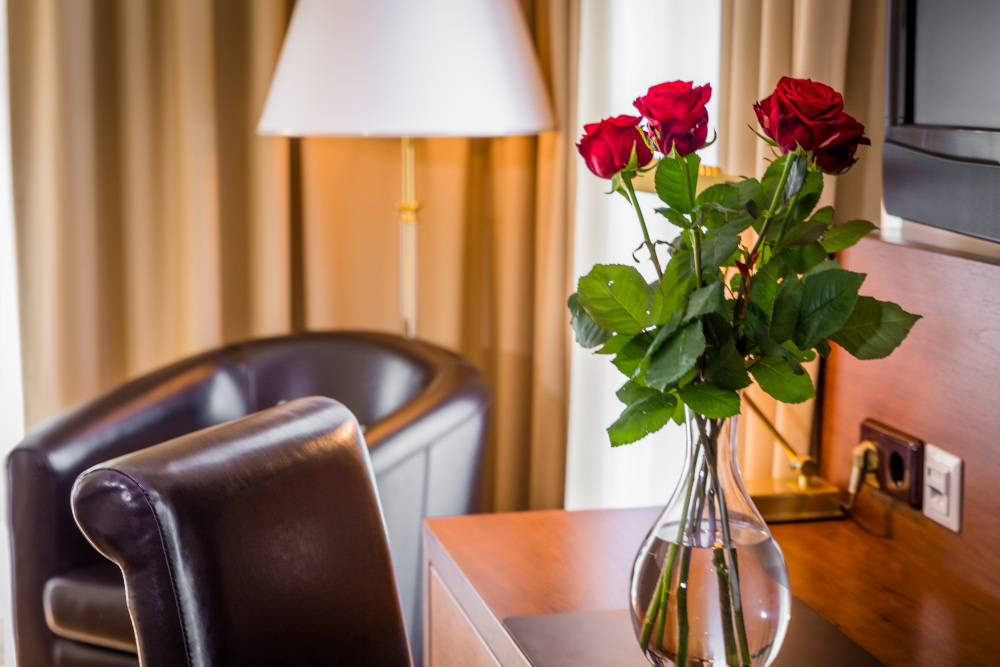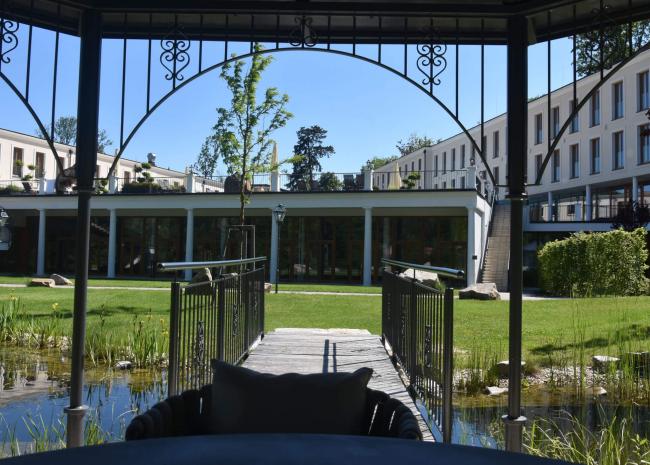
History
Our 4-star superior Hotel Schlosspark Mauerbach has been located at the place where the Mauerbach Castle, built by Georg Simpon Freiherr von Sina, was since 2008. After the dilapidated Mauerbach Castle had to be finally sanded down in the 1950s, the park, which was also laid out by Baron von Sina, fell into a deep sleep for decades, during which the railing changed hands several times.
In 2003 mesonic acquired the area and, after an intensive planning phase, banned it in 2007 with the revitalization of the area while preserving the historical trees as much as possible. Watercourses and biotopes and a herb garden were created, the former network of paths was renewed, pavilions were installed - an area ideal for enjoying nature.
But Mauerbach Castle Park can do much more than that. We offer the tailor-made ambience for those seeking relaxation as well as for events such as parties & amp; Fiern, be it seminars. 44 DeLuxe rooms and 2 junior suites in an absolutely quiet location and with a guaranteed green view as well as almost 2,000 m² of flexibly combinable event areas enable our team to create individual offers for the most diverse requirements.
Enjoy our seasonal award-winning cuisine every day, Robert Letz and his team cook from Monday to Sunday with great attention to detail for you and your guests. A wellness area with indoor and outdoor pool, saunas and steam bath as well as a fitness area round off the palace park pampering offer. Discover our house in all its facets, our dedicated team will be happy to accompany you.
We look forward to you!
Your Schlosspark team
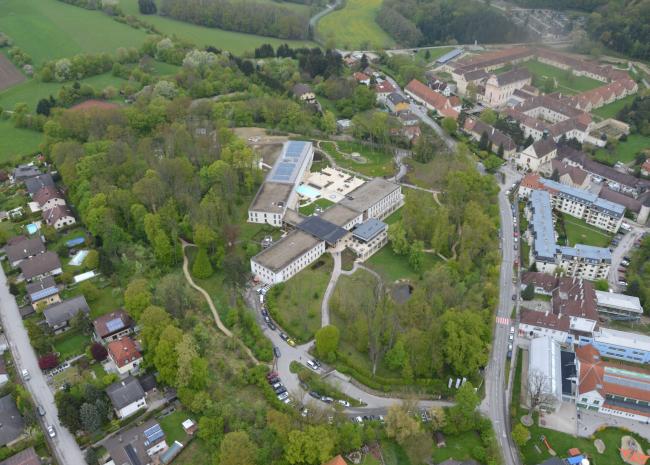
Timeline
| 1./2. JH | Establishment of a Roman estate on the field meadow (see hiking map M. 1: 20000 Römerbrunnden ") on the connecting road Vindobona (Vienna) - Comagenae (Tulln). |
| 1231 | First documentary mention of the Lords of "Muwerbach". |
| 1314 | Foundation of the Charterhouse "Im Allerheiligental" by Friedrich the Beautiful. |
| 14. JH | The heyday of the Charterhouse (first prior: Gottfried a.d. Seitz Charterhouse, today Zice / Slovenia). |
| 1529 | Destruction of the Charterhouse by the Turks and extermination of the local population - legend of the Jammertal. |
| 1590 | The Neulengbach earthquake caused great damage. |
| 1616-31 | New planning of the Charterhouse in baroque style under Prior Georg Fasel. |
| 1645 | Consecration of the new building of the gate church "Assumption of the Virgin Mary". |
| 1683 | Another destruction of the place and the Charterhouse by the Turks. |
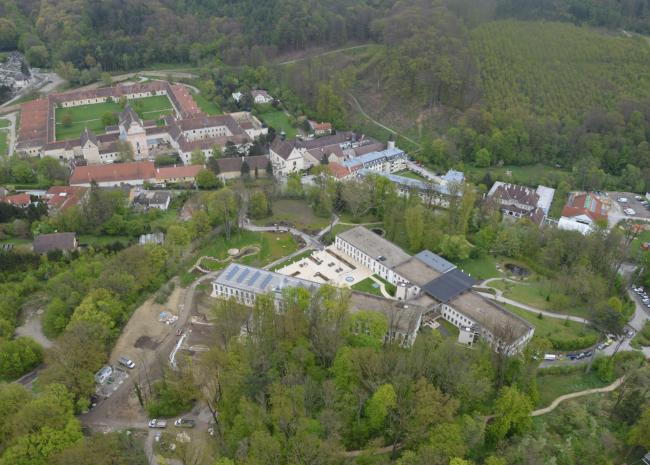
Timeline
| 1782 | Abolition of the monastery by Joseph II. |
| um 1750 | Completion of the reconstruction of the Charterhouse. |
| 1782 | Abolition of the Charterhouse by Joseph II. |
| 1783 | Assumption of the Virgin Mary - installation as a parish church. |
| 1784 | Structural changes, dedication of the monastery building as a supply institution for the elderly, the sick and sixths. |
| 1785 | Destruction of the rectory and the parish archives by floods. |
| 1833 | Georg Simon Freiherr von Sina buys the rule Mauerbach and has a castle built. It is demolished in 1957 due to dilapidation. |
| 1908 | Opening of the Kaiser Franz Josef I. Jubilee elementary school. |
| 1937 | Construction of a wooden church in Steinbach - "Maria Rast". |
| 1983 | Mauerbach is raised to a market town. |
| 1984 | The Federal Monuments Office takes over the Charterhouse from the state and sets up an information and documentation center for historical handicraft technology. |
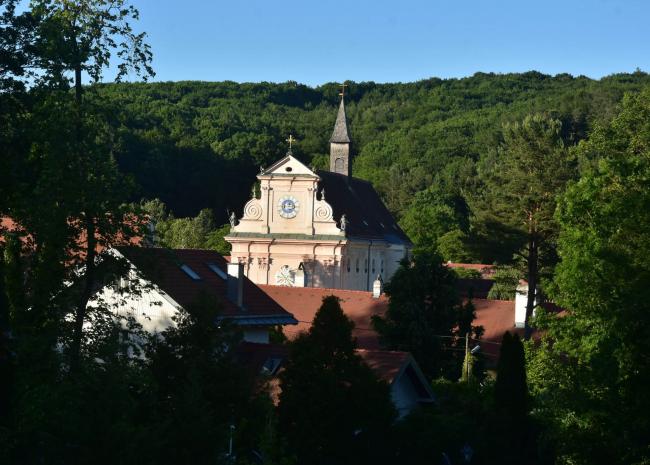
The Charterhouse
At the western end of the Mauerbachtal lies the Carthusian monastery, founded in 1314 by the Habsburg Frederick the Fair. The Order of the Carthusians was founded in 1084 by St. Bruno of Cologne in the Chartreuse, a valley near Grenoble in France.
The medieval complex of the Charterhouse was badly destroyed by the Turkish siege in 1529 and the nelengbach earthquake in 1590. In 1616, under Pror Georg Fasel, the construction of the monastery complex, which still exists today, began again.
Particularly noteworthy are the monastery church, equipped with stucco and grisaille painting in the late 17th century, with its cloister, the richly decorated imperial wing and the almost 500m long large cloister with the adjoining individual cells of the monks who devoted their lives to prayer in solitude and silence to have. The former imperial garden of the Charterhouse with its Christian symbolic bed forms was able to be reconstructed in its original form after an engraving from 1675.
In 1782 the eKartause Mauerbach was abolished by the decree of Joseph II and in the following year it was given to the supply fund for the accommodation of the "poor, infirm or otherwise disgusting sick" from the Viennese hospitals. By the Concordat of 1961 the building was transferred to the republic. The Charterhouse has been restored by the Federal Monuments Office since 1984.
The Charterhouse was presented to the public for the first time in 2000. Since then, changing exhibitions and concert events have taken place. The various rooms (monastery church, imperial halls, imperial garden, lapidarium) can also be rented for various events, seminars, concerts, etc.


